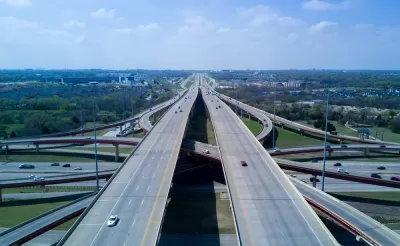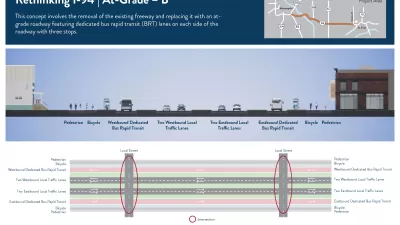Ten recommendations for effective freeway removal advocacy.

Writing in Strong Towns, Jay Arzu outlines 10 recommendations for “aspiring freeway fighters” who want to support highway removal initiatives.
First, Arzu emphasizes focusing on neighborhood reconnection and reinvestment as a key goal. “These areas will be affected the most by the deconstruction of the highway, and residents could be displaced if the area becomes too desirable. To mitigate the issues these communities will face, they must be partners from the start of the project, not the middle, and certainly not to check off a box.” The second recommendation also stresses the importance of community input and equity in the planning and implementation process.
Other recommendations include reducing focus on traffic data (which typically favors keeping highways), aligning design with the city’s existing street grid, providing ample visual representations of what the neighborhood could look like without the freeway, and working with local land banks. Steutenville also encourages freeway fighters to become involved in local transportation planning efforts as professionals and elected officials. “In the future, our State DOTs must operate with a deeper focus on eliminating vehicle miles traveled, reconnecting communities, and improving pedestrian safety.”
Ultimately, Arzu points out, “no highway is permanent!” Successful projects have already been undertaken in several cities, showing that reversing the highway-building trend and starting to heal the scars left on urban neighborhoods is possible.
FULL STORY: 10 Recommendations for Freeway Fighters

Maui's Vacation Rental Debate Turns Ugly
Verbal attacks, misinformation campaigns and fistfights plague a high-stakes debate to convert thousands of vacation rentals into long-term housing.

Planetizen Federal Action Tracker
A weekly monitor of how Trump’s orders and actions are impacting planners and planning in America.

Chicago’s Ghost Rails
Just beneath the surface of the modern city lie the remnants of its expansive early 20th-century streetcar system.

Bend, Oregon Zoning Reforms Prioritize Small-Scale Housing
The city altered its zoning code to allow multi-family housing and eliminated parking mandates citywide.

Amtrak Cutting Jobs, Funding to High-Speed Rail
The agency plans to cut 10 percent of its workforce and has confirmed it will not fund new high-speed rail projects.

LA Denies Basic Services to Unhoused Residents
The city has repeatedly failed to respond to requests for trash pickup at encampment sites, and eliminated a program that provided mobile showers and toilets.
Urban Design for Planners 1: Software Tools
This six-course series explores essential urban design concepts using open source software and equips planners with the tools they need to participate fully in the urban design process.
Planning for Universal Design
Learn the tools for implementing Universal Design in planning regulations.
planning NEXT
Appalachian Highlands Housing Partners
Mpact (founded as Rail~Volution)
City of Camden Redevelopment Agency
City of Astoria
City of Portland
City of Laramie





























